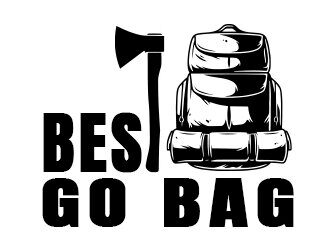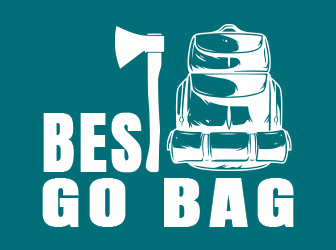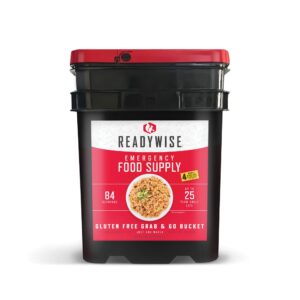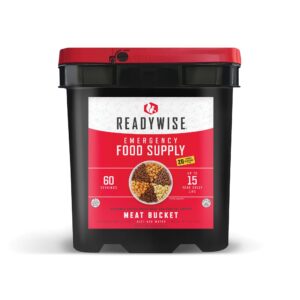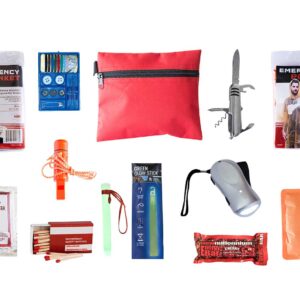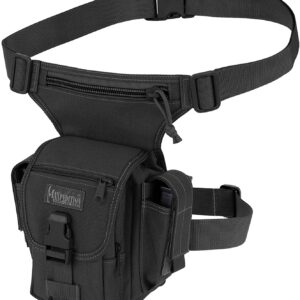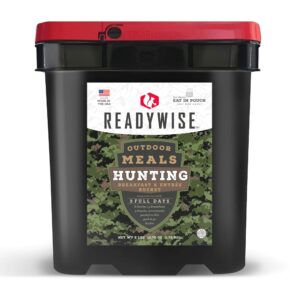There’s More Than 1 Way to Start a Fire
Everyone who keeps an eye on regional, national, and international news knows the same thing. There’s some crazy stuff going on in the world.
Wars in the Middle East and Ukraine. Domestic terrorism against America’s infrastructure. Rising food costs. Political unrest with an election year approaching. And extreme weather that is sure to soon include winter storms.
All these things and more affect us in one way or another. And when hard times hit, people do unimaginable things they wouldn’t ordinarily do.
Some of us may have to go off grid temporarily to survive if things get too wild. And in addition to making sure your three most basic needs are met – food, water, and shelter – you may find yourself in a situation where you need to build a fire.
Weird – and not so weird — methods
Being able to start and maintain a fire in the wild is crucial for many reasons. Including heat, light, cooking, and purifying water.
As well as possibly forming tools. Plus protection from animals and attracting the attention of rescuers.
Today I’m going to provide you with a number of ways to start a fire. We’ll start off with the more traditional tactics.
But stay with me because we’ll also get into some weird ways to do it when you don’t have common items at your disposal.
Fire’s three friends
First though, let’s review a few things about fire. Just as we need fire to survive, fire needs things to thrive. They are fuel, oxygen and ignition.
Fuel for a fire is pretty much anything that will burn. The slower it burns, the better. For cooking, items such as wood, various grasses, and dry manure work best. When you burn manmade materials, they often smell bad and can result in toxic fumes.
Oxygen keeps a fire going. And the air surrounding fire is usually adequate for that. Except for some situations when the immediate area is too tightly confined.
The way to intensify the heat coming from your fire is to fan the coals. But watch out for flying embers. They could singe you or ignite a nearby fire you can’t control.
3, 2, 1… ignite!
Ignition methods are plentiful. But most of them are not easy to accomplish. The easiest ways to start a fire are by using a disposable cigarette lighter or a magnesium starter stick.
As far as fire-starting materials are concerned, you want to make sure you have tinder, kindling, and long-term fuel.
Dry paper is great for tinder. But if you need to depend on what you find in the wild, you’ll want to gather some or all of the following. You’ll note that the key word is “dry.”
- Dry wood or bark that is finely shaved
- Dry grass or leaves, shredded if possible
- Bundles of dried bird or rodent nests
- Dry tree moss (also known as “Old Man’s Beard”)
- Dry plant seed fluff, such as cattail heads
Can’t start a fire without a spark
Kindling burns more slowly and can keep a fire going for a while. It includes sticks, twigs, bark, or dried grasses that have been bundled.
Other items used for kindling can also be effective. Such as gas, oil, and steering fluid. But they need to be used sparingly and handled wisely.
Your best long-term fuel is logs. They will burn better and longer if you split each one several times. Dead branches also work.
Another item as effective as long-term fuel, if you can handle gathering and burning it, is dried animal poop. It goes by more polite names such as cow pies, buffalo chips, Texas road apples, and smart pills.
Choose the right matches
Returning to our ignition methods for a moment, here are two items you should have with you in the wild. Even if they’re not your primary fire starters:
- Waterproof matches. You can find these at sports outlet stores. They work very well, although they’re somewhat expensive and should be rotated out every few years.
- Stick matches. They’re better than paper book matches, but need to be rotated out every six months or so. You also need to keep them dry.
As mentioned, your two easiest fire starters are magnesium sticks and cigarette lighters. A mag stick can be used about 100 times. They’re perfect for outdoor usage because they’re waterproof. And they don’t age or freeze.
Remember to practice using them BEFORE you have an emergency. Disposable cigarette lighters have many advantages. Including being cheap, lightweight, and easy to use.
Now that we’ve discussed what works for fire starting, let’s mention what doesn’t – paper book matches.
When they’re even slightly damp, they’re useless. And even when dry they deteriorate quickly. Don’t let the fact that they’re free in most restaurants influence you to toss them in your bug-out bag.
9 unusual methods
As promised, here are some of the more unusual ways to start a fire. You may want to choose one of these methods if you don’t have the materials previously discussed. Or, if you’re the type of person who doesn’t like to do things the easy way.
9V battery & steel wool. Keep a container of lint from your dryer in your backpack. Fluff up your steel wool to get some air in it. Then touch it all over with the positive and negative terminals of a 9-volt battery to spark a fire. Continue to touch it in multiple places, then add the lint as tinder and blow on it softly.
Aluminum can & chocolate bar. Rub a candy bar on the bottom of an aluminum can until the can bottom shines like a mirror. With direct sunlight on the can bottom, it will heat up to the point where it can ignite your kindling when held against it.
Sandwich bag & water. Crush a piece of dry tree bark into a powder. Place the powder onto a solid piece of bark. Pour water into a sandwich bag until it’s half-full. Tilt the sealed baggie to the side and then twist it at the top, making it into a liquid sphere. Use the baggie as a magnifying glass over the powder until the sun’s rays make it start smoldering. Then press the powder onto your kindling.
Vaseline & cotton ball. Pull a cotton ball apart – but not completely apart – and rub Vaseline or petroleum jelly all over it. Roll the cotton back into a ball. Use a magnifying glass or reading glasses and the sun’s rays to heat the cotton ball, which will hold a flame well once ignited.
Gum wrapper & battery. While you’re chewing a stick of gum, cut the foil it was wrapped in into a bowtie or hourglass shape. With two fingers of one hand, hold the two ends of the foil against the ends of a small battery. The foil will ignite and you can quickly light your tinder.
Dead lighter & paper. Maybe you were planning to use a lighter to start a fire, but it died on you. Not to worry. Remove the lighter’s safety lock and slowly roll the lighter over paper, back and forth. As the steel wheel grinds down on the flint rod, flint shavings will be created. Form those shavings into a small pile and then flick your dead lighter repeatedly over the pile until it ignites.
Water bottle. We all know that water is used to put out roadside brush fires. But did you know that water actually causes some of those fires? Lay a clear plastic bottle full of water on its side with the cap on. Then place dark-colored tinder in the beam of sunlight that passes through the bottle. Once the tinder begins to smolder, place it into your fibrous tinder and blow on it softly.
Citrus fruit. Because citrus oils are flammable, you can set them on fire if you can generate some sparks. Take a citrus fruit such as an orange, carve out a hole on the top and clear out some of the flesh. Let the orange dry out. Now push a small rock into the hole and rapidly rub a tool such as a knife on it until it sparks.
Flashlight. After removing the top lens of a flashlight, pull out the reflective cone that the light bulb rests in. Put dried moss or grass into the spot where the bulb was and place the cone in direct sunlight. Eventually the sunlight’s reflection will heat the tinder enough to cause it to burn.
Friend or enemy… you choose
Just as fire can be your best friend, it can also be your worst enemy. Yes, it can protect you, but it can also kill you.
When contained, fire can be controlled and used however you want. But when it escapes containment, it can destroy thousands of acres of forest, land, and buildings.
Fire can save your life, but only if you learn how to create it and control it.
We Could All Use Some Good News for a Change
There’s a lot of negativity in the world today… Wars, inflation, food shortages… With Giving Tuesday next week, this is the perfect opportunity to focus on the positive.
So, what is Giving Tuesday?
Giving Tuesday in its 12th Year
The Giving Tuesday initiative was launched in 2012. It was started by a non-profit organization called – fittingly enough – GivingTuesday.
Acts of “radical generosity” are encouraged on this day. More than 85 countries around the globe participate.
It’s estimated that in a recent year some $2.7 billion was donated by people in the U.S. on Giving Tuesday.
Asha Curran is the CEO and co-founder of GivingTuesday. She said every act of generosity counts. Whether it’s donating money, volunteering, or simply smiling at someone.
‘See What Speaks to You’
GivingTuesday provides a list of recommended organizations for monetary gifts and volunteering.
But the initiative is not officially linked to a group of causes. They also provide suggestions for ways to give back without donating money.
The organizers suggest thinking about causes near and dear to your heart. Plenty of worthy organizations and causes can also be found on sites such as Charity Navigator and Volunteer Match.
“See what speaks to you,” Curran said. “Think about whether it feels more meaningful for you to give back locally – maybe on your block – or globally.”
Providing Tornado Relief
One place where volunteers have made a huge impact is western Kentucky. That’s where the area’s worst tornado disaster on record occurred in late 2021. The cost was 57 lives, more than 500 injuries, and 4,000 structures.
The Mayfield, Kentucky community has come together over the past 18 months. They’ve rebuilt much of what was lost in the tragedy.
Building a new multimillion dollar manufacturing facility, for example, is helping create 80 new jobs.
Kathy O’Nan is the Mayfield mayor. She said, “Our people have been so resilient and have hung in there and worked for the past 18 months. It’s inspiring for us.”
Rebuilding From the Fires
Many folks are also volunteering to rebuild in Lahaina, Hawaii. People there suffered from devastating wildfires last summer.
You’ve probably heard of the “tiny house” movement. Tiny homes are being built for some who lost their homes in the fires.
Construction workers are volunteering their time. And people around the world are sending money to cover costs.
Here’s how the Goodnews Network website describes it. “What started as a few guys coming together to support their neighbor… has turned into a bold grassroots effort to raise money to build small, long-term homes for displaced residents. And pay locals who lost their jobs in the fires to do it.”
A New Home for Grandma
Franklin Graham’s Samaritan Purse provided another example of helping the helpless.
A grandmother named Earnestine Reese lost her Alabama home due to a tornado. Samaritan’s Purse built her a new home featuring her first-ever dishwasher.
It was one of 13 new homes built in the area by some 1,400 volunteers. The organization also helped 110 families clear debris from their damaged homes following the storm.
When Graham visited her, she said this. “Thank you for making a way. It’s a blessing just to have you here in our yard.”
Now It’s Your Turn
How about you? Do you have any inspiring stories you’d like to let us and our readers know about?
If so, I hope you will share them in the comments section on the blog.
Maybe someone did something nice for you that made you feel good. Or perhaps you did something nice for someone that made you feel better.
Maybe you can’t think of anything you’d care to mention. If so, feel free to give a thank you. Thank a veteran for their service. Thank a loved one for brightening your day. Appreciation goes a long way.
Thanks in advance for participating!
Happy Thanksgiving! We’re most thankful for YOU.
Happy Thanksgiving! As you gather with your loved ones to celebrate the day, I wanted to take a moment to say what I’m most thankful for — YOU.
This holiday is a time of gratitude, and I am thankful for your unwavering support over the years. Your trust in us has been the foundation of our success and has helped us support veteran charities.
Every order made helped us do all this:
- Donate over $975,000 to veteran charities
- Support 46 nonprofits coast to coast
- Pay postage for 1,750 “We Care” packages
- Send 14 deserving veterans on an Honor Flight
- Buy presents for 147 birthday parties for children of fallen soldiers
And so much more. This Veterans Day your purchases helped support an extra donation to the Special Operations Warrior Foundation, which helps injured veterans and their children.
I hope “seeing” your impact warms your heart, as it does mine.

You are not just customers but partners in our mission to give back. Thank you for joining the 4Patriots family.
Wishing you a peaceful and joyous Thanksgiving!
Your Crucial Communication Device Options for This Winter
Aside from the frigid temperatures, the problem with winter is, you don’t know exactly what’s coming or when. You don’t know when that big winter storm is going to wreak havoc in your neck of the woods.
What you do know is that when it does come calling, communication will be even more important than ever. You’re going to want to know how bad it’s going to be, where it’s going to hit hardest, and what your best escape route might be.
Today I want to talk to you about the various communication devices you should consider owning. Then you can determine which one (or ones) you should have on hand before Old Man Winter pays a visit.
You can’t always rely on the grid
A natural disaster or other crisis can have wide-reaching effects. Including downed cell towers and power outages. Without Wi-Fi or cell service, the communication devices we’ve come to depend on become obsolete.
Having an alternative communication system during a disaster is almost as important as stocking up on enough food.
There are two types of communication you need to keep in mind when looking for devices:
- One-way communication allows you to receive important information and updates from local authorities. You will be unable to communicate back, though.
- Two-way communication is for both sending and receiving information. This will allow you to talk with friends, family, and other community members.
Walkie-Talkies
Walkie-talkies are one of the most basic bug-out bag communication devices. They are compact, perfect for stashing into a go-bag, and easy to use.
While walkie-talkies have a limited range compared to other two-way communication devices, many people own them. You may be able to contact others outside your immediate circle if needed.
Quality matters when it comes to walkie-talkies. You don’t want to go with a cheap set that resembles a child’s toy. A quality set is better to have in your emergency kit and to take camping.
They usually have a range of up to several miles. And they feature a secure mode for when you don’t want others to listen in on your conversation.
Plus, they’re easy and quick to recharge with a solar power bank. So you don’t have to worry about your walkie-talkie dying on you.
CB Radio
You’ve probably seen truckers in real life or on television use citizens band (CB) radios to communicate with each other. CB radios offer more range than walkie-talkies. But you’ll still be limited in distance.
If your friends and family live within a close range, you could each set up a radio in your home. That way you’ll have a quick and reliable way to communicate.
It’s unlikely your neighbors will also have CB radios. So these radios will offer more privacy for you. However, you may have difficulty reaching out for help with one.
While walkie-talkies run on batteries, CB radios require a power source. If you choose to go the CB radio route, make sure you’re equipped with a solar generator for electricity.
HAM Radio
Amateur (HAM) radios give you a wider range than CB radios and walkie-talkies. A HAM radio is the better option if you’re hoping to stay in contact with those living farther from you. Or if you want to increase your chances of reaching people outside your social circle.
Unfortunately, HAM radios require a license to transmit. In a crisis, you might not be worried about following regulations. But HAM radios do have a learning curve.
You’re going to want plenty of practice before the real deal happens. Practicing with your HAM radio will also give you a chance to get to know other HAM radio owners. They may be able to help when disaster strikes.
As with CB radios, you’ll need an alternative electricity source like solar power if the grid goes down. Luckily, many HAM radio operators have invested in alternative power. So you’ll be in good company if a crisis happens.
Solar Radio
Walkie-talkies, CB radios, and HAM radios are all great for interacting with other people. But they don’t lend themselves toward receiving essential news and updates.
When it comes to one-way communication devices, you can’t go wrong with a simple, solar-powered radio. Especially one that can power up other important devices. Such as your cellphone.
It’s very likely a storm will knock out your power for a while this winter. And make roads impassable. Maybe it will happen several times.
But with a solar-powered radio, you’ll know what’s coming in advance and be more ready to deal with it.
Stay on top of the weather before it gets on top of you.
America at Risk of Recession Amidst War?
You don’t get to be the chief executive of JP Morgan Chase by making frivolous claims or predictions.
In fact, the top dog at the largest financial services company must be careful about what he says. His statements can have a huge impact on the economy.
Recently Jamie Dimon told investors the world may be facing “the most dangerous time… in decades.” So, people took notice.
And not only investors. It’s anyone who pays for anything. Including groceries, utilities, and gas for vehicles. We should be aware that wars in the Middle East and Ukraine affect our finances.
Economies Are at Risk
Dimon warned those wars could increase energy and food prices. As well as global trade. Especially if they escalate.
He said these geo-political tensions could put the economies of the world at risk. Including ours.
“My caution is that we are facing so many uncertainties out there,” Dimon said. He suggested that higher interest rates and increased inflation are possibilities.
“The war in Ukraine compounded by (the) attacks on Israel may have far-reaching impacts on energy and food markets, global trade, and geopolitical relationships.”
Will the Middle East War Go Regional?
The JP Morgan Chase CEO condemned the attacks by Hamas against Israel. He said his bank is standing with “the people of Israel.”
He added, “Terrorism and hatred have no place in our civilized world. And all of our hearts here at JP Morgan Chase go out to all who are suffering.”
As horrible as the Israel-Hamas war is – 6,000 deaths so far and many more injured – it’s mostly contained within Israel and Gaza.
But what if Iranian-backed militants from other countries get involved? Including from Syria and Lebanon. We could see increased U.S. involvement. Which would put our troops in more danger.
A regional war including the world’s largest oil-producing countries will likely increase gas prices. It would also greatly affect the global supply chain. Which would cause significant shipment delays and higher costs.
Recession Could Be on Horizon
Now, there is no exact formula for what will cause prices to increase. Here’s an example. During the 50-day war between Hamas and Israel in 2014, financial markets were unaffected.
But oil prices rose globally when Israel and Hezbollah battled in Lebanon. There were concerns the 2006 conflict would turn into a regional war.
There is a distinct possibility of inflation increasing. Financial experts are also concerned about an economic recession.
Global fears could convince people to spend and invest less. Which can be a big part of causing a recession.
War in Ukraine Affects Food Prices
But we don’t have to look back to 2006 or 2014 to recall economic problems associated with a war. Even if that war occurs thousands of miles away from America.
After Russia invaded Ukraine in 2021, prices for wheat and other commodities rose. Those countries are two of the world’s largest wheat producers.
And the snowball effect caused supply chain problems. As well as inflated prices for a variety of foods containing wheat.
Some blame that war for extending inflation problems in America. Otherwise, our inflation might have improved more over the past two years.
Pray for the Best… Prepare for the Worst
The Israel-Hamas war is likely to raise oil prices. The ongoing Ukraine war will likely contribute to keeping food prices high.
It’s a double whammy. And it’s one of the reasons Dimon and other financial experts are warning about potential rough times ahead.
Neither war appears to have an ending in sight. More than 1,400 people in Israel died from the original Hamas attack, while the death toll has passed 5,000 in Gaza.
Many others are suffering physically and emotionally. Including family members of hostages being held by Hamas in horrible conditions.
It’s an understatement to call the world an uncertain place right now. The only advice I can provide is to make sure you’re prepared for even more uncertainty ahead. Please protect yourself and your family, and pray for peace.
Is Another Polar Vortex Headed Our Way?
They called it “historic.” They called it “cataclysmic.” They called it a “once in a lifetime” weather event.
I’m referring to Winter Storm Uri in 2021. It may still be fresh in your memory. Wind chills of 15 degrees below zero have a tendency to do that.
This vicious storm impacted more than 170 million people. Nearly 10 million of them experienced power outages. It resulted in hundreds of deaths. And over $25 billion in damages.
Uri was particularly devastating in Texas and other Southern states. Folks there had never seen anything like it. Temperatures in the teens for days on end froze water pipes, knocked out power and disrupted supply chains.
It’s Forming as We Speak
Now, if this truly were a once in a lifetime event, Americans wouldn’t have to worry about it occurring again. Including in areas generally unaccustomed to ongoing freezing temps.
But here’s what a recent article in the Ft. Worth Star-Telegram revealed: The polar vortex that caused the “Great Texas Freeze” could occur again.
In fact, weather experts say another one is forming in the stratosphere over the North Pole as we speak. It’s expected to be a factor as winter approaches.
If that occurs, it’s possible extremely cold air will once again sink down through Canada and into the continental U.S. And once again it could easily make its way into Southern states and even Mexico.
February Storm Battered America
More on the polar vortex in a moment. It’s important to remember that Uri was just one of many recent winter storms. And they all knocked out electrical power.
Back in February, a winter storm caused power outages for more than 1 million people. It closed hundreds of miles of highways. From Wyoming to Arizona. It even resulted in the first blizzard warning for Southern California in decades.
Many northern states were also affected by the storm. Including Michigan, Wisconsin, and Illinois. And as far east as New York.
Schools were closed. Thousands of flights were canceled. Countless drivers were left stranded on snow-bound roads for hours. High winds and snow in the Pacific Northwest cost the lives of several climbers and hikers.
Christmas ‘Gift’ Was Worse Than Coal
Two months prior to that storm, nearly 2 million U.S. homes and businesses lost power due to a Christmas Eve and Christmas Day storm.
Blizzards in northern areas including Pennsylvania and Michigan. Freezing rain in the Pacific Northwest. Both resulted in numerous traffic accidents and canceled flights. More than 65 million people in the eastern U.S. were warned of rolling blackouts.
Once again, America had been hit by a storm that enveloped much of the country. It stretched from the Great Lakes near Canada to the Rio Grande along the Mexico border. Plus the Northwest and the Rocky Mountain regions.
Dangerously cold wind chills meant frostbite could occur in minutes. Some folks died in vehicle pile-ups on the Ohio Turnpike. Another driver perished when he skidded into a creek in Kansas City, Missouri.
Strong Vortex Means Stability
Back to that polar vortex for a moment. A polar vortex is an extensive coverage of low pressure and cold air surrounding the North and South Poles.
The stronger the vortex is, the better for us. A strong vortex means it’s stable. And that means it stays where it belongs – above the Poles.
The problem occurs when a polar vortex weakens or gets disrupted. The jet stream that normally shifts northward (over the North Pole) now becomes wavy.
This allows warm air to move into the Arctic. And polar air to sink down into places where it’s not welcome. Such as Canada, the U.S., and Mexico.
Weak Vortex Means Cold Air Outbreak
Amy Butler is a National Oceanic and Atmospheric Administration stratosphere expert. Here’s how she explained what happened with Winter Storm Uri.
“The polar vortex weakened,” she said. “It got stretched out of shape and slid southward off the pole.
“Most of the time when this happens – and it happens on average about every other year in the Arctic – some part of the mid-latitudes will ultimately experience a cold air outbreak.
“The disruption of the vortex encouraged the polar jet stream to become wavier for several weeks. And in combination with other weather patterns, created favorable conditions for a severe cold air outbreak in the central U.S.”
Consider Water Needs in an Outage
Over the last few years, we’ve learned to expect the unexpected. At least we should have learned that by now.
And by “expect,” I mean to be as prepared for it as possible. When winter storms cause blackouts, we need ways to cook food and get clean water without power.
One way to do this is with a solar cooker. Just let the sun provide the free energy you need to heat water for cooking and cleaning.
Winter storms are coming. And so are power outages. That’s what we know. It’s time to also determine how we’re going to deal with them.
4Patriots Salutes Veterans at Nashville Headquarters
I hope your Veterans Day weekend brought you as much joy as mine did. Whether you spent it with a veteran or attended a parade, I’d love to hear how you celebrated.
As a veteran myself, I’m pleased to share the success of our Veterans Day event over the weekend.
Over 50 local veterans headed to our headquarters to help us honor their service. It was a day filled with pride, joy, and gratitude… and a few heated cornhole matches. The atmosphere of camaraderie and respect was truly inspiring.
With your support, each veteran left with a FREE 72-Hour Survival Food Kit. Not to mention a dozen or so smiles, handshakes, and stories.
One veteran’s words about knocked us over. When asked how his day was going, he replied with a smile, “I’ve never had a bad day. Never needed to.”
His words were a testament to the unyielding spirit that defines our veterans. Not just on Veterans Day, but every single day.
In other news… I’m excited to share that our veterans event made it into USA Today’s roundup of Veteran’s Day meal and retail deals. Out of hundreds — maybe thousands — of special veteran offers, our free 72-Hour Food Kits made headlines. It was one of the few non-restaurant offers, too.
This recognition is not just ours… it’s yours too. Your support of our family-owned business lets us give back to veterans in meaningful ways. Together, we are making a difference in the lives of those who have served our nation.
Thank you for being a part of it. Your support fuels our mission to keep American families safe and to honor our veterans every day of the year.
As always, to your survival…
Frank Bates
P.S. Stay tuned for more updates and opportunities to support our veterans.
Weight a Minute – Meat Fillers Are Stealing Your Money
When we buy meat at the grocery store, we’re charged by the pound. That’s fair. The more you get, the more expensive it should be…
But when meat processors engage in “plumping,” that’s different. It reminds me of the old image of butchers subtly placing a finger on the scale while weighing meat so they can charge more.
So, “What is meat “plumping?” Basically, it’s adding meat fillers with no nutritional value to add to the weight of your meat. Which raises what you pay at the checkout counter.
Those fillers may not negatively affect your health. But they certainly aren’t doing your bank account any favors.
What’s saltwater doing in my chicken?
Here’s one definition of plumping from Consumer Reports. Plumped chicken commonly contains 15% of its total weight in saltwater. But in some cases it can contain as much as 30%.
The price of chicken is based on weight. So, opponents of this practice estimate that shoppers pay up to $1.70 more per package for added saltwater.
Sometimes injected into raw chicken meat is chicken stock, seaweed extract, or a combination of them.
This process brings the total annual cost to U.S families to an estimated $2 billion in added weight charges. I don’t know about you, but I find that rather disturbing.
Juicier & tastier… but more expensive
Companies that add fillers to chicken and other meats say the purpose is to make the meat juicier and tastier.
Kenneth McMillin is a professor of meat science at the Louisiana State University Agricultural Center in Baton Rouge.
He said these processors use multiple-needle injectors or vacuum tumblers. They force the sodium solution into the muscle.
Binding agents within the solution keep the added salt and water from leaching out of the meat while it is transported. As well as while it’s in grocery stores and while being cooked.
Bring on the sodium
Plumped chicken and other meats don’t just make your cost higher at checkout. They also have a higher sodium content than non-plumped meats.
Food experts say a serving of plumped chicken can contain between 200 and 500 milligrams of sodium.
Non-plumped chicken, on the other hand, usually contains in the range of 45 to 70 milligrams of sodium per serving.
Despite being plumped, chicken and other meats are still eligible to carry labels reading “All-Natural” and “100% Natural.”
Naturally occurring water
To be fair, poultry and other meats always contain some naturally occurring water. The muscle in lean cuts of meat can be composed of 75% water. The remaining 25% is protein, fat, carbohydrates, and minerals.
An eye of round roast contains 73% water on average prior to cooking. A whole broiler fryer contains 66% water before cooking.
As mentioned, some producers add saltwater and other fillers including flavor solutions. The law requires that they be stated on labels.
If a meat is labeled as “marinated,” it can contain no more than a 10% solution. With boneless poultry, it’s 8%. And with bone-in poultry it’s 3%.
3,000+ food additives?
According to the USDA, there are more than 3,000 substances used as food additives.
The most widely used ones include salt, sugar, and corn syrup. They are used for enhanced flavor, as well as a preservative.
Here’s how the Food and Drug Administration defines the term. A food additive is any substance that becomes a component or otherwise affects the characteristics of any food. Directly or indirectly.
This includes any substance used in the production or processing of food. As well as treatment, packaging, transportation, or storage.
Aim for organic
It’s very possible your grocery store carries chicken and other meats that have been plumped. If you wish to try to avoid plumped meat, look carefully at labels.
Watch for words such as “enhanced,” “plumped,” “broth added,” and “solution added.” And remember that seeing “natural” on a label does not mean it’s additive-free.
Labels containing any of the words or phrases below mean it’s more likely your meat will contain fewer additives. But there’s no guarantee.
- Organic
- Raised without antibiotics
- . Farm-raised
- Pasture-raised
- Hormone-free
You may find it nearly impossible to locate chicken and other meats containing no additives. Including saltwater. In that case, choose the ones with the lowest percentage of additives.
Doing so will reduce the amount of sodium in your diet. And will very possibly result in less money spent at the store.
Most American Families Have Beef With Today’s Meat Prices…
It wasn’t long ago that you witnessed bare shelves in the meat aisle of the grocery store at the height of the pandemic… Is that memory still etched into your mind as it is in mine?
Sometimes we could grab only one package of meat due to rationing. But more often than not, all we could ask was, “Where’s the beef?”
Well, now we have a different problem. One that is likely to get worse before it gets better. Meat sections at the supermarket are fuller than they used to be… But prices are outlandish.
Wars overseas. Droughts the past couple of years slowing down cattle and chicken farms. Other extreme weather events disrupting the supply chain. They all add up to meat being far beyond many of our budgets.
Record-High Prices for Meat
Here’s a recent headline from the Fox News website. “Chicken prices hit record highs under Biden administration as U.S. inflation keeps beef, pork out of reach.”
Ironically, Americans are expected to eat more chicken than ever before in the coming months. Why? Because beef and pork prices are even higher.
The U.S. Department of Agriculture (USDA) predicts that beef consumption will drop to its lowest level in five years. That’s due to dwindling cattle supplies. Consumption of pork is already at its lowest level since 2015.
Both wholesale and retail prices for chicken have flown the coop. That applies to whole chickens, bone-in legs, and drumsticks.
Now, instead of saying, “Where’s the beef?”, consumers are asking, “Where’s the relief? How can I put meat on the table for my family at these prices?”
Fewer Chickens Available
One of the reasons chicken prices are rising is because several companies including Tyson have cut poultry production.
The Covid impact is still being felt. Tyson closed six of its U.S. plants – with a total of 4,700 employees – to reduce their costs.
The facilities that hatch chicken eggs are placing fewer eggs in incubators. That’s according to U.S. government data.
And, of course, that means fewer chickens will be available for meat production in the near future. Last year there were more chickens available than Tyson and other companies could sell.
An increased demand for chicken could change that over time. And that demand will probably come from consumers who realize they can’t afford beef and pork anymore.
Smallest Cattle Herds in Decades
According to CNBC, retail beef prices in the U.S. are at record highs. That means you’re paying more for everything from burgers to steaks to steak tartare.
They say the shrinking cattle supply is the main factor in these price increases. And they don’t expect it to ease up any time soon.
A Wells Fargo analyst said cattle herds have been reduced to their “smallest number in decades.”
Long-term droughts in key cattle ranching states including Texas, Kansas, Nebraska, and Oklahoma are to blame. That’s according to those who watch the markets closely.
Beef Is Shedding 180 Million Pounds
The USDA says that retail beef prices are averaging about $8 per pound these days. In addition to fewer cattle being available due to drought, input costs have risen.
Those input costs include labor and transportation. As well as increased packaging costs.
Is there light at the end of the tunnel? If so, it’s too far away to see. The USDA reported in September that beef production for the remainder of this year will decline by 180 million pounds.
Cattlemen are holding onto cows longer in order to rebuild their herds. That results in a lower supply of cattle to provide beef.
Less Hay Means Thinner Cattle
No matter who does the analyzing, it always comes back to drought as the main culprit.
Hay is normally a water-intensive crop used to feed cattle. But droughts year after year brought hay stocks last year to their lowest levels since 1954. The average farm had 13% less hay than the previous year.
One analyst said the demand for beef will far exceed the supply. And that always means higher prices. He added that prices are likely to be at or near record levels for the next 18 months.
We’ll see those higher prices at the grocery store, at butcher shops, and in restaurants. The Texas Roadhouse restaurant chain, for example, just announced its second price increase of the year.
The chain is expected to place a higher emphasis on its to-go business. That will reduce its staffing costs. But their business is thriving. They’re expected to open at least 25 new locations in the near future. In other words, it’s a sellers’ market.
That does not bode well for average consumers who just want to feed meat to their families. My advice is to look for ways to lock in good prices for beef and chicken that will last until you need it.
Then you won’t have to ask, “Where’s the beef?” It will be in your survival food stockpile.
What in the World is Messing With Your Food & Water?
As Americans, we take our easy access to nutritious food and clean water for granted. We know our food isn’t perfect. It has lost some vitamins through the decades. And we realize our water isn’t completely pure.
But both healthy food and drinkable water are normally easy for us to obtain at the grocery store. And from our faucets.
On the other hand, we’ve seen the effects of major world events over the past few years. They’ve disrupted the flow of these life-giving necessities.
Severe weather events. Wars in Europe and the Middle East. A global pandemic. They’ve all wreaked havoc on our access to food and water. Food shortages and soaring prices, plus water contaminations, have been the result.
Today I want to take a look at all three of these causes. Any or all probably will continue to affect our ability to find nutritious food and clean water. And at the end I’ll let you know about a great way to secure both. Plus peace of mind.
Hurricane Ian’s Wrath
First, let’s look at severe weather. It’s the most common cause of problems connected with obtaining food and water. Just last year, Hurricane Ian pummeled Florida after making landfall near Fort Myers as a Category 4 storm.
After ravaging most of central Florida, it gained strength in the Atlantic Ocean. Then it attacked the Carolinas.
Ian was the strongest hurricane to make landfall in the Sunshine State since 2018. And the deadliest (161 deaths) since the 1935 Labor Day hurricane. As well as the costliest in Florida history with $113 billion in damages.
Winter Storm Uri’s Deep Freeze
And who can forget Winter Storm Uri just one year earlier? The mid-February storm started in the Pacific Northwest and reached down to Texas. Nearly 10 million people lost power in the U.S. – some for a week or more.
By the time temperatures finally got above freezing, well over 300 people had died. Six tornadoes were part of this outbreak in the Southeast.
Both Hurricane Ian and Winter Storm Uri resulted in contaminated drinking water. And supply chain problems slowed food deliveries to a crawl.
Ukraine War
Early last year, Russia launched an attack against Ukraine. The Russians have occupied some of the country’s eastern portions since then.
The attack and ongoing violence have been condemned by the world. Many countries imposed sanctions against Russia. Or increased already existing sanctions.
Tens of thousands of deaths have resulted from the conflict. Not to mention a refugee crisis. Ukraine, with military support from the U.S. and other nations, has held its own over the past six months.
Ukraine and Russia are major producers of wheat. So, the world has seen food shortages and escalating prices. Supply chains have been bottled up. This has caused major delays in shipments of food and other products.
Israel-Hamas War
In just the past few weeks, war in the Middle East has set the world on edge again. Hamas terrorists attacked Israel from land, sea, and air on October 7.
Israel responded to this vicious assault that killed more than 1,400 citizens. It struck back with a vengeance. Nearly 3,000 Palestinians have died. And about 10,000 have been injured in retaliatory strikes.
America is about 7,000 miles away from violence in the Gaza Strip. But global markets are negatively affected by these events. And that means gas prices will rise here again. As well as food prices.
If Middle East countries join the hostilities against Israel, expect oil embargos that will increase the price of gas. Food and bottled water prices will rise as well, due to increased transportation costs.
Covid Pandemic
Fresh in all of our minds is the global Covid pandemic that changed the way we lived the past few years.
Nearly everything was affected by the pandemic. Businesses suffered huge losses. Food, water, and other products were in short supply due to supply chain problems.
And costs for pretty much everything went up. Potential contamination of food and water was on everyone’s minds.
Hopefully we won’t experience another pandemic anytime soon. But look how quickly the coronavirus spread. All it takes is a new out-of-control virus to put us back to square one.
Grab It While You Can
As mentioned, there’s an ideal way to ensure you have plenty of non-perishable food. And cleaner drinking water.
Even if extreme weather, wars, or pandemics affect the availability, quality, or price of those crucial elements.
For a limited time, you can grab a 3-month supply of great-tasting, nutritious, and long-lasting survival food. Plus more than $750 in free bonuses. It’s all through our Veterans Day special.
Included in the freebies is a countertop water filtration system. Plus freeze-dried beef and chicken and more.
